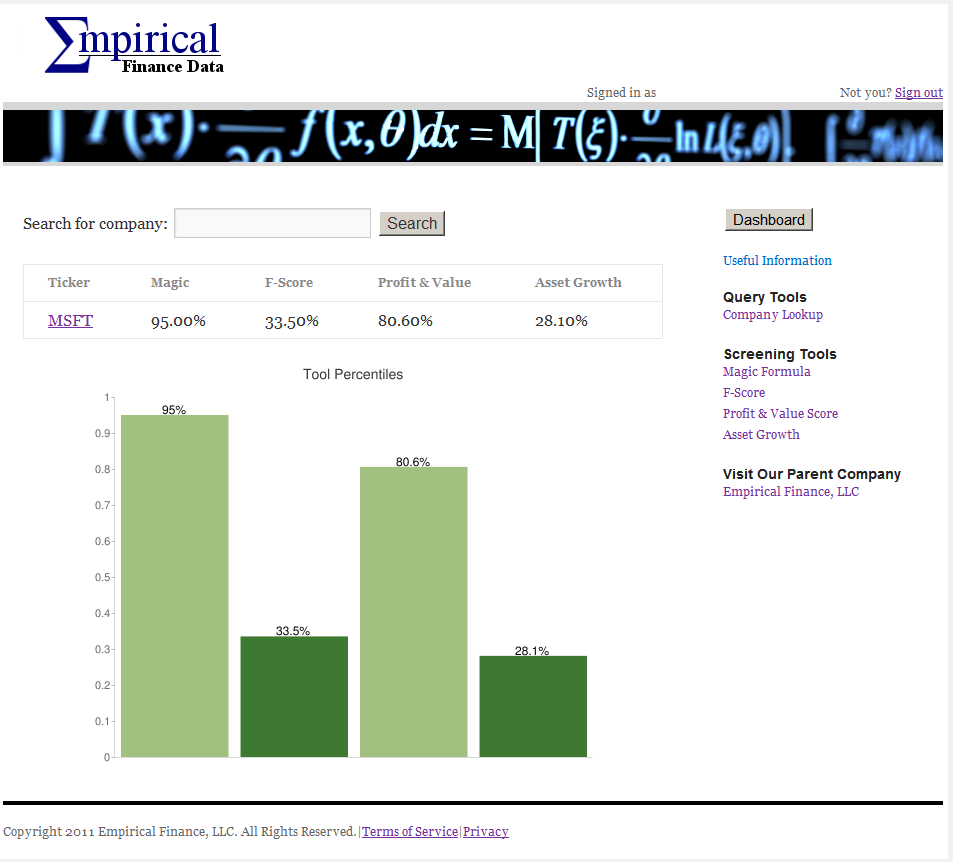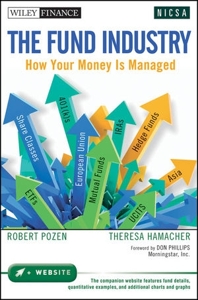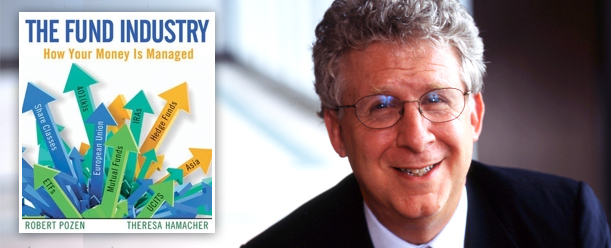This transcript is of a conversation I had with William Poundstone (listen to the podcast), author of the newish book, Priceless:The Myth of Fair Value (and How to Take Advantage of It)
Hi! I’m Zack Miller, author of the recent book TradeStream Your Way to Profits: Building a Killer Portfolio in the Age of Social Media, and you’re listening to Tradestreaming Radio, our home in the internet radio space. This is our place to discuss how technology is helping investors to become better, smarter, and more accurate at what they do.

You can find this podcast on iTunes. You can also find lots of other material relating to this podcast, as well as archives of our programs at my website www.tradestreaming.com There’s lots of other great content there as well, and I recommend you check it out.
We have a very interesting podcast setup for today. Joining us on the podcast will be Bill Poundstone, who’s the author of Priceless: The Myth of Fair Value (and How to Take Advantage of It). It’s a fantastic book, its gotten a lot of great reviews online and off as well. The book focuses mainly on retail pricing decisions, how consumers are affected by pricing. Things like damage awards in court cases setting precedents, anchoring in terms of negotiation, where we started a negotiation has a big effect on where we end the conversation; arbitrariness of numbers, contrast, a lot of issues that today’s behavioral economists are focusing on.
Bill Poundstone creates a really readable history of how we’ve come to understand how humans are effected by pricing. I took a little different tact; obviously, we’re concerned here at Tradestreaming with investor decisions. I asked a lot of questions to Bill about how investors react to the market, how psychological market pricing is, crowd-following in terms of piling on to a hot momentum stock. How is that affected by our perceptions of pricing? And, how susceptible we are, as investors, to cues that pricing is giving us?
Bill is a wealth of information. I hope you find this usable and interesting. Check out the book. I will link to the book on Amazon and to Bill’s site on the blog.
As always, we value your comments on Tradestreaming, please feel free to drop me an email, or leave your comments on the blog at: www.tradestreaming.com , and I hope to check in with you next week with another great podcast.
*************
The first question I had was traditional economics posited that economic man is somewhat rational, and obviously a lot of what you write about- that’s obviously being challenged. How is it being challenged?
Bill Poundstone: Well, certainly economics is based on the idea of a reserve price. The idea that everyone has a secret maximum that they are willing to pay for something, and all of their decisions, all of their actions, are really founded on that reserve price. You look at what the market price is and if your reserve price is higher you buy, otherwise you decide to keep your money in your pocket.
What psychologists have found, really just since the 1970s, is that really reserve prices are a kind of fiction. That we really manufacture these reserve prices almost on the spur of the moment, and they way we do that, actually, is a lot like the way that our senses work. In other words, if you go into a dark room suddenly, and you’ve been in a light room, everything is going to be completely dark, you won’t see anything. But once your eyes adjust to the darkness, you’ll be able to see all sorts of things. It’s really you’re very sensitive to contrast, but not so much to absolute values.
The surprising thing is that psychologists like Amos Tversky and Daniel Kahneman have shown that with prices we really work much the same way. We are very sensitive to contrast.
A simple example of that, that you can see, is that if you go into a really fancy department store they will actually arrange it so that one of the first things you see will be something that is just outrageously expensive. And you’ll kind of look at that price tag and shake your head and say, you know, who would pay $2,000 for that handbag? But the reason they do that is because of the contrast effect. You’ll then look around it and you’ll see more reasonably priced stuff, and that’s going to seem like a bargain in comparison.
This almost sounds funny when you describe it, but they’ve done studies and found that this is really the way the human mind works. We are very sensitive to these contrasts, and if you have a sale that says, “This flat screen TV was once $2000, and now you can get it for just $1300,” even though you are a little skeptical about that original price of $2000, it still does affect your decisions, it does have an effect, and it causes more people to buy that. Again, it’s this idea that people are very sensitive to contrast.
Because these contrast effects are so big, it really does challenge this idea of a reserve price. That’s made an awful lot of differences in how we look at economics.
I guess the same issue would hold sway in the stock market, or obviously when someone pays $10 for a stock, the $10 doesn’t really mean anything, other than the fact that it’s the market cap divided by the number of outstanding shares. Comparing two stocks at a $10 price, doesn’t make any sense, because it really has to do with how big they are.
Do you see pricing influencing the way investors may look at stocks as well?
Poundstone: Yes, I think the stock market particularly is a good case of psychological pricing. Because, I mean no economist has really come up with an entirely convincing theory of what sort of price earnings ratio you should be paying. Really, a lot of it is based on crowd psychology, on what you see other people doing. There is just this natural tendency to follow the crowd, to do whatever you see other people doing. In situations like that, where there isn’t a clear value for something, we are particularly susceptible to all of these psychological cues.
I guess the stock market, as you’re mentioning, is sort of the collective wisdom of a lot of different investors, if an individual investor is somewhat irrational in their approach to pricing, we’ve always talked about the market as being more rational, obviously, because efficient market hypothesis, we assume all knowledge is sort of baked into the existing stock prices.
Is the market reflective of that collective? Would we see also a skew there that the market itself would actually be irrational according to what you’re discussing?
Poundstone: Yeah, it’s certainly the collective wisdom, but it’s also some of that collective irrationality. The classic example of that is that stock prices are much more volatile than stock earnings are. So, that shows that people really are susceptible to some sort of crowd effect, sometimes they decide they are going to be paying a lot more for earnings than they are at other times. It really seems to be this crowd effect, the psychology rather than any rational reason for that.
Currently the market continues to go up, and you read a lot of theory right now with quantitative easing. People are sort of piling into the stock market, whether they’re afraid of missing a run, or they’re just jumping in at the tail end of an existing run. Yet, there’s still this sort of macro economic wall of worry.
Why are people continuing to pile in, in the face of the fact that we’re looking down a summer or a year ahead of us of maybe some extreme volatility?
Poundstone: Yeah, well in many cases, in a lot of these psychological experiments they show that people really are very susceptible to what you might call the power of suggestion, to doing what other people do.
I mean the classic example is in a boring meeting if one person yawns, a whole lot of other people are going to yawn. It’s not that they’re making even a rational decision, that now is a good time to yawn, but you just sort of do it without thinking.
I think there’s a lot of similar effects at work in the stock market. The more people you see doing something, the more inclined you are to follow along.
There’s really kind of an interesting experiment on that was done in the 1950s where people were given what was called a “vision test”. They were just showed simple lines on sheets of paper and asked, “Is this line the same length as this line or not?”
Every question was actually very easy. One line was either obviously much longer, or not longer. What they did was have one real experimental subject in there with a lot of confederates of the experimenter. The confederates were there to give the wrong answer. They found that at least half of the people would give the wrong answer when everyone else was giving the wrong answer. No one wanted to be the one to say the emperor has no clothes, this is not right.
He asked people, “Why would you do that?” They gave all sorts of answers. Some said, “Well, I thought it was wrong, but I figured it must be me.” “I wasn’t seeing it right,” or, “It was a trick question,” or something.
So, they really showed that there is this incredibly strong tendency to do whatever you see other people doing, even when in the back of your mind you feel it’s wrong. I think that’s certainly what you see at market peaks, where everyone wants to get in, do what other people are doing, even though you do have a certain amount of worry in you.
It speaks to all the more importance of being a contrarian thinker, right?
Poundstone: Yes, definitely. Again, if you could sort of bottle contrarianism, and get some way of knowing when to use it, that would be a very valuable thing.
You speak about prospect theory in the book, and you describe what it is and how it impacts investors’ feelings toward losses. Can you describe a little bit about that?
Poundstone: Yeah, in its simplest form it basically means that there is this great asymmetry. We feel losses much more strongly than we feel gains. In other words if I gave you a fair bet and said, “I’m going to toss a coin, 50/50. You either win $100 if it’s heads, or you lose $100 if it’s tails,” most people would really not want that, because they know they would feel really bad if they lost $100, whereas they would feel good if they won $100, they wouldn’t feel good enough to make up for the chance of a loss.
In fact, when they asked people how much would you have to win to make this a bet you’d want to take the usual answer is somewhere around twice as much. In other words if I said, “I’ll give you $200 if it comes up heads, you lose $100 if it comes up tails,” then people would want to do that.
Now obviously in any rational terms that’s an incredibly great bet, and you should do whatever you can to get that kind of bet, or even something that was even slightly in your favor. The smart investors, the hedge fund managers, if they can get something where there’s a tiny edge, that’s obviously what they spend their whole careers trying to do.
But when you get to the emotional matter of it, people really do not like losses of any kind. This is something that is very important in investing, because anyone managing other people’s money has to keep in mind that when you do have these inevitable down turns your clients are going to be very unhappy. In situations like that they’re going to want to compare you to what the indexes are doing. If you’re even a little below those indexes they’re going to be very inclined to switch managers. So, it is something of very great practical importance in investing.
Financial advisors obviously go through that process when they meet with the client, or even with an existing client. They do it periodically in trying to assess their risk tolerance. Why is that process so hard? Is it that we don’t necessarily have the language to describe risk? Or is it that investors themselves are just very bad at assessing their own risk? As you speak about this loss aversion, they may not necessarily claim to that when you ask them these types of questions, right?
Poundstone: Yeah, I think risk aversion is one of those sort of interesting fictions, kind of like IQ. I mean there’s certainly a grain of truth to it, but it kind of overlooks the complexity of human nature. I mean we all know that there are very smart people who do dumb things. So, it’s kind of tough to have a single number IQ that tells how smart you supposedly are.
In much the same way it’s very hard to place your risk tolerance on a scale, because one of the things they’ve found is that it’s very, very context dependant.
In a situation where your portfolio is down 50%, almost everyone becomes incredibly less risk tolerant. But in other situations where you see everyone else is making all this money, and everyone is talking about it at cocktail parties, how much money they’ve made, people suddenly decide they’re very risk tolerant.
It really does depend on the situation. It also depends a lot on even how you phrase the questions. So, it’s really a very hard thing to nail down someone’s risk tolerance, and you have to be aware that the actual personality differences from one person to another can actually be less than the differences from like Monday to Tuesday for the same person, depending on what that person has encountered in that particular time.
I’m hearing what you’re saying, and I say the same things to clients, it almost sounds like heresy when I say it, but given the fact that investors have such a hard time really describing or assessing their own tolerance toward risk, do you call into question – should people really be in the stock market, or why they’re approaching the stock market?
Is it sort of just a legalized form of gambling? Are they actually in there with a focus to beat inflation, right? I would say that’s sort of the baseline why people should invest. Given the fact that it’s so hard does that call into question sort of the whole reason why we’re investing?
Poundstone: I mean I think it’s worth asking people those types of questions. Again, you have to realize that you’re not necessarily going to get straight answers. A good example of that- the whole idea of bonds is that they’re supposed to be safe relative to the stock market. If you say, “If you’re investing in treasury bonds you’re guaranteed to get back your principle plus interest,” then everyone says, “Oh, that’s great. There’s no risk. I want that.”
But, another way of explaining that is if you say, “Well, if you take into account inflation, there actually is a pretty good chance that you’re going to end up with less buying power than you had.” If you tell people that then they decide that maybe bonds really aren’t such a good thing.
One of the things that Kahneman and Tversky showed is that in so many of these, even big important decisions, so much depends on how you phrase the question. I think anyone interviewing their clients have to be aware of that. You should probably think about posing questions in different ways to see if you get the same answer in both cases, in many cases you won’t.
In my own practice, given the fact that I’ve become aware of a lot of these sort of human tendencies, I guess I’ve evolved my investing towards sort of a more quantitative methodology, where I’m sort of taking the decision making process out of it. Given these sort of human frailties, do you think that’s necessarily a good thing for investors to do, sort of automate the investment process to some extent?
Poundstone: Yeah, I think there’s a lot to be said for that. I mean if it’s automated and you’ve got a good algorithm for doing that, then you at least avoid all of these human frailties that do really cut into your return. It’s certainly been shown that people are much happier with stocks if they don’t read their account statements every single day and instead every year, or even every couple of years. They’re generally happier to see that there is a steady gain, since you’re more likely to have that if you only look at your account value very infrequently.
Again, it’s a lot of just where your attention is, and what you’re focusing on. Because given that the stock market is very volatile, and because of prospect theory, you’re constantly having these losses relative to what you had the previous day, and that really is something very psychologically draining.
Of course nowadays everyone is constantly connected. A lot of people really do obsess over their current portfolio value. This can be very draining for them, and can cause them to make bad decisions. In answer to you question I would say it is really- that would be the ideal, to try and have some sort of automated, an algorithm that you trusted to make these daily decisions.
You discuss hormonal effects, right?
Poundstone: They’ve found that testosterone actually has a huge effect on how risk tolerant people are, how aggressive they are in their investing and so forth. They’ve found that most of the really successful traders, at least in one study in London, were men who had higher levels of testosterone. It really does affect your decision making.
One question I ask of all guests on the program, because Tradestreaming and what I try to do on the site and through the podcasts is help people discover new ideas, and discover new tools, I ask guests what you use in terms of either researching the stock market, or even how to stay on top of new pricing theory and stuff like that. Are there certain sources that you use in sort of your daily rounds, around the internet, or offline, or whatever, that you find particularly useful that you’d like to share?
Poundstone: I’m really basically just a big believer in rebalancing. I mean I’ve read Swenson’s books. That’s pretty much my gospel.
I figure I really don’t have enough time to get really an informational edge, so I basically rely on index funds and rebalancing them, which I check every week.
What about new sources of information in terms of the core of this book, of pricing? Are there certain blogs, or industry periodicals that you’d recommend?
Poundstone: Yeah, I read basically a lot of the psychology journals. Some of the blogs are very useful. Dan Ariely’s blog I enjoy quite a bit, which is very nicely written. Again, but actually a lot of the psychology stuff, like Psychological Review, there’s one called the Journal of Risk and Uncertainty that really has a lot that pertains to the stock market. I usually find some interesting articles there.
This has been really helpful. I found the book very useful and very interesting. Thanks for participating.
Poundstone: Thank you.
That was Bill Poundstone, the author of Priceless: The Myth of Fair Value (and How to Take Advantage of It). We explored lots of issues in terms of how investors are susceptible to pricing cues, for better and for worse in their investing process. It’s something that all investors should be aware about, and it’s certainly something at Tradestreaming we’re trying to stay on top of as new research comes out, bubbling up some of the new findings in the field.
Love to hear from you if you have any other perspective on this. Bill brought a perspective that was pretty expansive in terms of its wide reaching coverage of the behavioral economics field. He’s a pretty prolific author, and he’s the author of some other books.
Check out the book. It was an interesting read, something that has gained its place on my bookshelf. I hope you enjoyed it. We’ll be back next week.
More resources
















